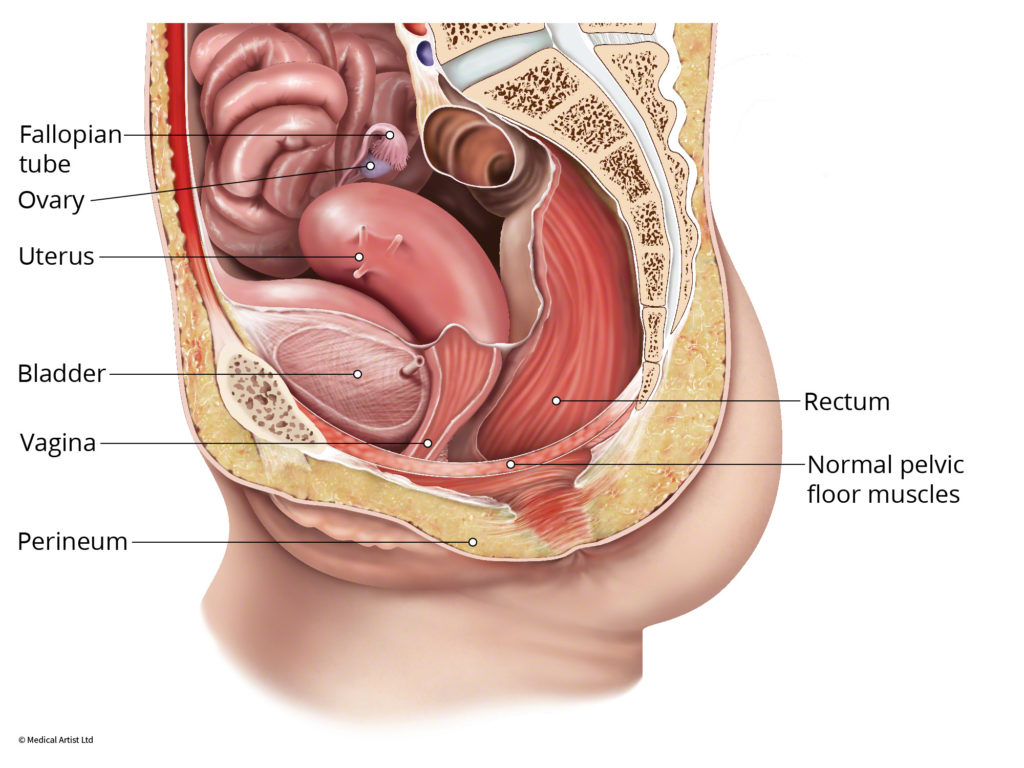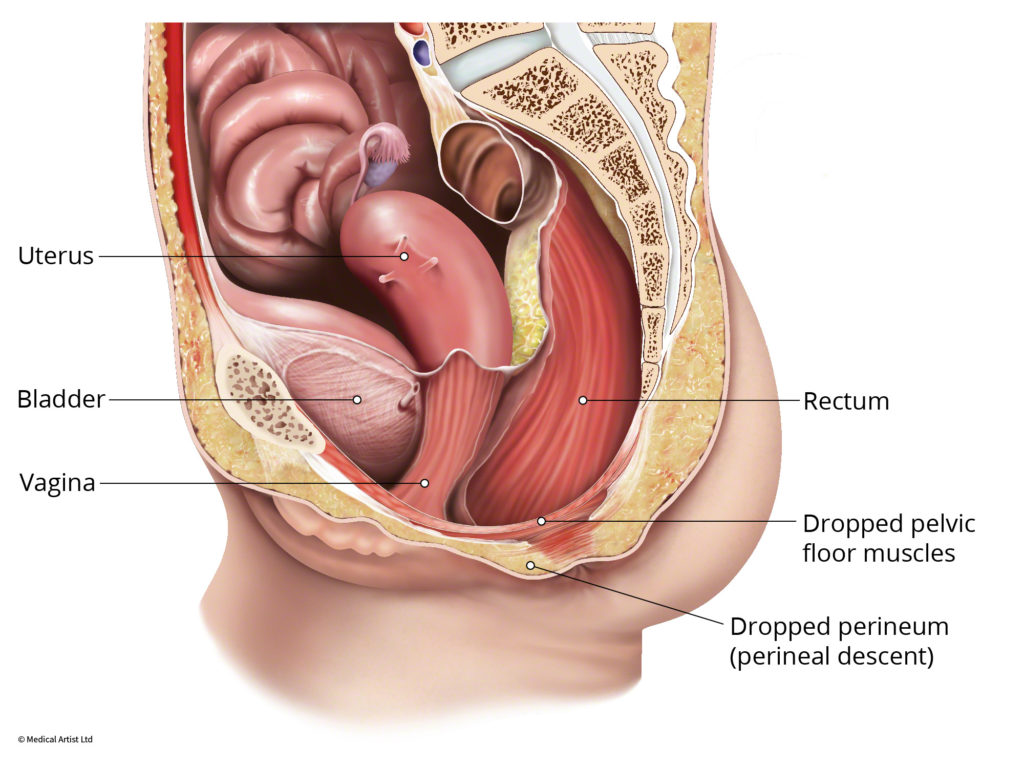Perineal descent is a condition in which the perineum prolapses (bulges down) or descends below the bony outlet of the pelvis. Perineal descent is often associated with chronic straining in patients with chronic constipation. Other conditions that weaken the pelvic floor musculature can also lead to symptomatic perineal descent. Some amount of perineal descent is often present in conjunction with pelvic organ prolapse.
Perineal Descent
Common symptoms of perineal descent include the need to press up on the perineum to aid with bowel movements and the feeling of the pelvis “dropping” with weight bearing activity.
Treatment begins with identifying and addressing the underlying cause. As mentioned above, constipation and the need to chronically strain is often identified and treated. Pelvic floor physical therapy to strengthen the floor of the pelvis can sometimes be utilized to help symptoms. If surgery is performed, the focus is on elevation of the perineum and pelvic floor with either a da Vinci Sacrocolpoperineopexy or a posterior vaginal mesh placement with perineorrhaphy and elevation of the perineum. The choice of surgery depends on the presence of other conditions such as cystocele, rectocele, or uterine prolapse and on the severity of symptoms.
Chronic constipation and perineal descent may co-exist with rectal prolapse. If rectal prolapse is present, rectopexy is performed with sacrocolpoperineopexy. Bowel and fecal incontinence also may be associated with perineal descent if the perineal body is weak and is treated by anal sphincteroplasty. If you think you may be dealing with issues related to perineal descent, we encourage you to contact us today to schedule a consultation.
For more information, check out this video:
Book An Appointment
I put off seeing a doctor for years. The staff at Austin Urogynecology was amazing. They made me feel very comfortable and explained what I needed to feel like myself again. The staff is professional with an exceptional bedside manner! I am so happy I found them!
-Mary G.
Got questions? Need an appointment? We’re here to help!


